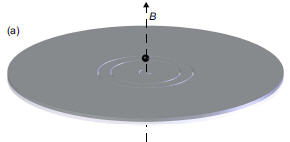 |
All of the trap electrodes for a planar Penning trap are deposited on the surface of one plane. This trap design (unlike other designs discussed below) is potententially scaleable to many traps with their electrodes in the same plane, with possible electronic coupling and detection circuits microfabricated into the trap plane (or one that is parallel). No effort to observe a single electron loaded into such a trap has succeeded so far. Our extensive (28 page report) argues that the planar trap designs attempted so far are designed in a way that makes it nearly impossible to observe a single electron stored within. We identify new optimized designs for planar traps that reduce the amplitude dependence of the crucial observed oscillation frequency. Our theoretical study of planar Penning traps builds upon a long history of introducing new trap designs. One challenge is that there are no "orthogonalized" trap designs possible for planar Penning traps. We show how to optimize ideal planar traps, and we introduce enclosed planar Penning traps, covered planar Penning traps, and mirror-image planar traps. |
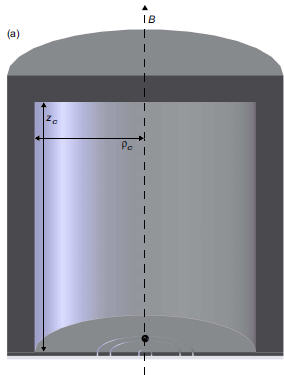 |
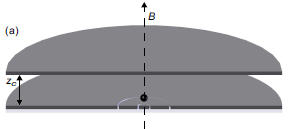 |
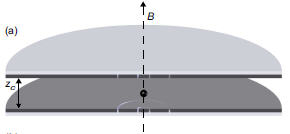 |
| Enclosed Planar Penning Trap | Covered Planar Penning Trap | Mirror-Image Planar Penning Trap |
We have clearly demonstrated that it should be possible to make an unusual quantum bit (qubit) using the spin of a trapped electron. This demonstration was carried out with a single electron that was suspended for months at a time in a cylindrical Penning trap (see cut away figure) located within a magnetic field from a self-shielding solenoid. The electric field produced by the carefully selected trap geometry is good enough to allow the manipulation and detection of a single electron and the non-destructive observation of its spin flip.
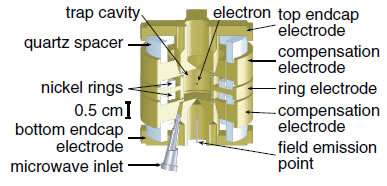 |
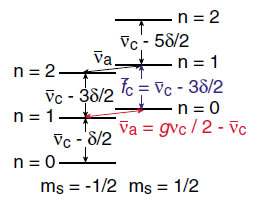 |
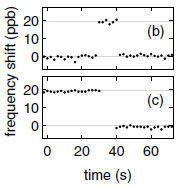 |
The trap and the electron's cyclotron motion are cooled to about 100 milliKelvin in temperature to make a "quantum cyclotron" - an electron whose cyclotron motion is in its quantum ground state until we deliberately excite it to a higher quantum state. The detection sensitivity we get from our one-electron self-excited oscillator and a quantum nondemolition detection method allows us to resolve the quantum states of the single suspended electron's cyclotron motion (along with its spin state).
We would like to observe a single electron within a Planar Penning trap which we regard as a potentially scalable geometry. This is the thesis work of Joshua Goldman. On a longer time scale we would like to realize a single electron qubit and investigate the coupling of two or more qubits. This may be the thesis work of a future student.
© 2015 - Last Updated: 08/30/2018 - Disclaimer